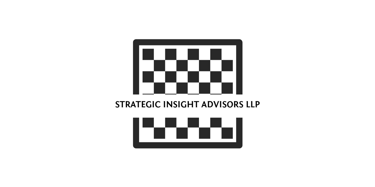Navigating the Hazards in Supply Chain Management
Explore the vital role of supply chain management in global commerce and the risks threatening the integrity. This post delves into strategies for mitigating disruptions, safeguarding profitability, and maintaining the reputation amidst the complexities of connecting manufacturers to customers.


In the intricate web of global commerce, supply chain management stands as a linchpin connecting manufacturers, suppliers, distributors, and customers. However, amidst the complexities and interdependencies lie numerous risks that can disrupt operations, erode profitability, and damage reputation. In this blog post, we'll explore the diverse array of risks inherent in supply chain management and strategies to mitigate their impact.
Unveiling the Risks in Supply Chain Management
1. Supplier Reliability: Dependence on external suppliers exposes businesses to the risk of supplier unreliability, including delays, quality issues, and supply shortages. Disruptions in the supply chain can ripple downstream, causing production bottlenecks and customer dissatisfaction.
2. Demand Volatility: Fluctuations in consumer demand, market trends, and economic conditions pose challenges for supply chain planning and inventory management. Inaccurate demand forecasts can lead to inventory imbalances, excess stockpiles, or stockouts, impacting revenue and profitability.
3. Logistics Disruptions: Transportation delays, customs issues, and geopolitical instability can disrupt the flow of goods along the supply chain. Incidents such as natural disasters, labor strikes, or infrastructure failures can cause logistical bottlenecks and supply chain breakdowns.
4. Cybersecurity Threats: With increasing digitization and interconnectedness, supply chains are vulnerable to cybersecurity threats such as data breaches, ransomware attacks, and phishing scams. Cyberattacks targeting supply chain systems can compromise sensitive information, disrupt operations, and undermine trust.
5. Quality Control Issues: Poor product quality or compliance failures at any stage of the supply chain can lead to recalls, product returns, and damage to brand reputation. Ensuring consistent quality standards and regulatory compliance across suppliers is essential for mitigating quality-related risks.
6. Financial Instability: Financial risks, such as payment defaults, bankruptcy, or currency fluctuations, can impact the financial health of suppliers, customers, and partners within the supply chain. Financial instability among key stakeholders can disrupt operations and strain business relationships.
Strategies to Mitigate Supply Chain Risks
1. Diversification of Suppliers: Reduce dependency on single-source suppliers by diversifying the supplier base geographically and strategically. Establishing relationships with multiple suppliers enhances resilience and flexibility in managing supply chain disruptions.
2. Demand Forecasting and Planning: Invest in robust demand forecasting tools and data analytics to improve accuracy in predicting demand patterns and market trends. Agile supply chain planning enables proactive adjustments to inventory levels and production schedules in response to changing demand dynamics.
3. Logistics Redundancy and Contingency Planning: Develop contingency plans and alternative logistics routes to mitigate the impact of transportation disruptions or logistical bottlenecks. Collaborate closely with logistics partners to monitor and address potential risks in real time.
4. Cybersecurity Measures: Implement robust cybersecurity protocols, encryption technologies, and employee training programs to safeguard supply chain data and systems against cyber threats. Conduct regular security assessments and audits to identify vulnerabilities and ensure compliance with industry standards.
5. Supplier Collaboration and Risk Management: Foster collaborative relationships with suppliers based on transparency, communication, and mutual trust. Implement supplier risk management programs to assess supplier performance, compliance, and financial stability regularly.
6. Quality Assurance and Compliance: Implement stringent quality control measures, product testing protocols, and compliance monitoring processes to maintain product quality and regulatory standards. Conduct regular audits and inspections of suppliers' facilities and practices to ensure adherence to quality and compliance requirements.
Conclusion
In today's dynamic and interconnected business environment, managing risks in the supply chain is paramount for sustaining competitive advantage and ensuring business continuity. By identifying potential risks, implementing proactive mitigation strategies, and fostering resilience across the supply chain, businesses can navigate uncertainties, mitigate disruptions, and achieve operational excellence. Embracing a holistic approach to supply chain risk management empowers businesses to adapt to evolving market conditions, protect brand reputation, and drive sustainable growth in an increasingly volatile world.
